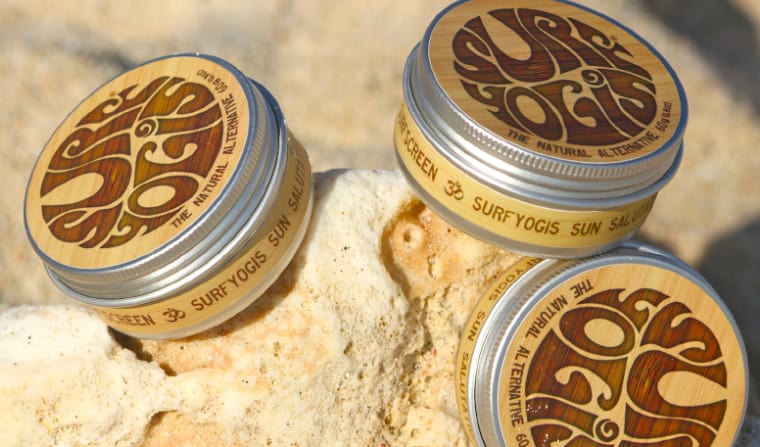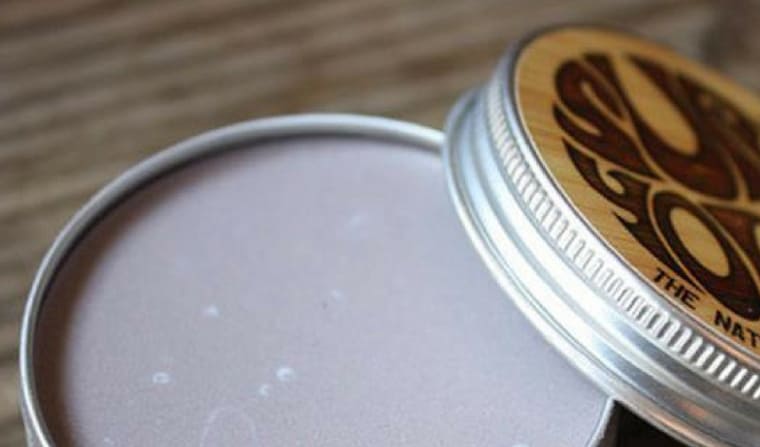Most surfers probably align on the following statement: sunscreen is a must when surfing. However, so far there is no mutual consent about which sunscreen should be used: A classical sunscreen with a high sun protection factor or one made out of zinc? We looked at both types from the sustainable point of view …
The National Oceanic and Atmospheric Administration (NOOA) recently found out, that up to 6000 tons of sunscreen end up in the ocean annually. It´s not such a surprise, that this amount of mostly chemical substances is a challenge for the sensitive ecosystem. To mention just one of the relations between sunscreen and the ocean: the chemicals of sunscreen make our coral reefs bleach out. Oxybenzone, Octinoxate and Octocrylene are mentioned in various studies, but what are they?
The downsides of chemical sunscreens
Those mentioned chemicals are the components of sunscreen which on the one hand are blocking the harming UV rays to protect our skin, however on the other hand these chemicals are hardly decomposed and are often floating on the water surface. They can therefore also contaminate organisms and provocote unwanted reactions – thus the natural ecosystem gets imbalance.
The surfing paradise Hawaii recognized this problem and will therefore pass a law for the ban of sunscreen with Octinoxate and Oxybenzone starting in 2021. In some regions of Mexico similar bans were introduced.

Surfyogis (c) Monkey Surf
Are physical sunscreens more environmentally friendly?
As we have seen, there are good reasons why we should not use chemical sunscreen. As an alternative there are for example physical or mineral sunscreens. They are (more) environmentally friendly and have the advantage that they reflect sun rays immediately, before they can enter into the deeper dermal layers of our skin. Substances used are for example zinc oxide or titan dioxide. They have a white, opaque appearance which might at first glance look funny on your face, but it has its advantages!
However, selling those products is not so easy, as transparent lotions are preferred by the masses. Manufacturers therefore often shred the ingredients into so-called “nanoparticles“, which make the sunblock transparent. However, there are some studies which state that those nanoparticles when exposed to sun can cause chemical reactions which could change our DNA. We tried to find out more about those statements, but found only different inconsistent studies and therefore prefer not to go into details here. Anyways, to be on the safe side you can stay with: the whiter and non-transparent the mineral sunscreen is, the better.

Surfyogis (c) Joel Fitzgerald Surfboards
Surfyogis – an example for natural sunscreen
For us one of the very good alternatives to chemical sunscreens is the zinc-cream from “Suryogis”. If you have ever been to Bali, Lombok or Sri Lanka, you might have already seen their product, as it is used quite a lot there by surfers. Surfyogis surfscreen zinc is made out of 100% natural ingredients, like coconut oil, chocolate, coffee, vanilla, bees wax, castor oil and the protecting zinc oxide. They don´t use any nanoparticles and therefore the components should not have any negative impact on our health. Even the small tin of 60g lasts quite a long time – according to Surfyogis about 70 surf sessions in warm waters. And there is also a cold-water version.

Surfyogis (c) by Lyn McCarthy/Niche Pictures
Our tips for protecting yourself from the sun
Apart from using the right sunscreen, there are some other options how you can decrease the risk of getting burnt or making your skin suffer. Here are some of our recommendations (you might already know them, however it´s never bad to get remembered 😉 ):
☀️ Avoid to surf at noon, when the UV-rays are especially strong and dangerous for your skin.
☀️Protect yourself also when you are under water or when there are clouds. Sometimes clouds can even increase the UV-intensity!
☀️ Don´t forget reapplying your sunscreen regularly. Surfyogis recommends to reapply every 2 hours when surfing, especially when the zinc gets rubbed off.
☀️ Protecting your skin with clothes like shirts/Lycras/rashguards, shorts or wetsuits is still the best – and most environmentally friendly- way to avoid the UV-radiation.
If you are interested in the natural sunscreen from Surfyogis, you should have a look at their nice Website. In one of our surf trips to Indonesia, we got to know this surfscreen zinc ourselves and started loving it, that´s why we recommend it to you! And to thank our readers, we even got a discount-code for you: Use the code ‘SURFMIND10’ to get 10 percent off in their onlineshop.
Have you already any experience with natural sunscreen? And if so can you tell us about your favorite product in a comment below? We are looking forward to hear from you!!
